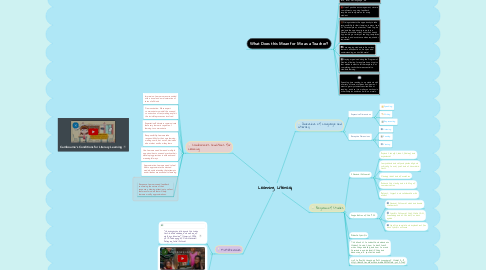Learning Literacy
Door maddison schumacher


1. What Does this Mean for Me as a Teacher?
1.1. Accepting of all Students regardless of background, strengths, challenges, gender, race, level, first language, etc.
1.2. Use of positive encouragement, sincere compliments, ongoing feedback, respect and compassion for every student.
1.3. Giving students the opportunity to take responsibility for their learning in ways I see fit. For example as a teacher, I wish to give students the opportunity to work in a flexible environment that suits their needs by providing a variety of seating, templates and tools, and assistance when required or requested.
1.4. Encouraging students to be curious learners, ask questions, be open and understanding, and collaborate!
1.5. Staying organized using the Program of Studies, allowing for exploration on topics that students want to further explore, but completing tasks that are essential to students learning.
1.6. Spending time reading to my students with a variety of texts, storylines and genres. I want to get my students excited about reading, and use it to make connections in other subjects and even build on morals.
2. Cambourne's Conditions for Learning
2.1. Immersion- Learners are surrounded with a visual and aural saturation of texts of all kinds
2.2. Demonstration- More expert communicators model the use and construction of text, making explicit the invisible processes involved
2.3. Expectation-Educators communicate that every learner is capable of learning to communicate
2.4. Responsibility-Learners take responsibility for their own learning, making some, but not all, decisions about what and how they learn
2.5. Use-Learners need time and multiple opportunities to use and practise their developing practices in authentic and meaningful ways
2.6. Approximation-Learners need to feel free to approximate the desired models, understanding that attempts and mistakes are essential to learning
2.7. Response- Learners need feedback concerning the nature of their responses, drawing attention to salient features of models that will help learners modify approximations.
3. Multiliteracies
3.1. "Literacy expands beyond the linear text-based reading and writing of western schooling" (Cummins, 2006, p.4) A Pedagogy of Multiliteracies: Designing Social Futures
3.2. Multimodal Literacies Multiliteracies in the Early Years Classroom
4. Cambourne's Conditions for Literacy Learning
5. Dimensions of Language and Literacy
5.1. Expressive Dimensions
5.1.1. Speaking
5.1.2. Writing
5.1.3. Representing
5.2. Receptive Dimensions
5.2.1. Listening
5.2.2. Reading
5.2.3. Viewing
6. Program of Studies
6.1. 5 General Outcomes
6.1.1. Explore thoughts, ideas, feelings and experiences
6.1.2. Comprehend and respond personally and critically to oral, print and other media texts.
6.1.3. Manage ideas and information
6.1.4. Enhance the clarity and artistry of communication
6.1.5. Respect, support and collaborate with others
6.2. Organization of the P.O.S.
6.2.1. General Outcomes which are broad statements
6.2.2. Specific Outcomes that state skills, knowledge and attitudes for each grade
6.2.3. specific examples and explanations for each specific outcome

